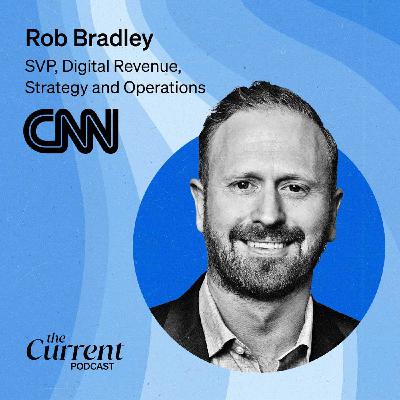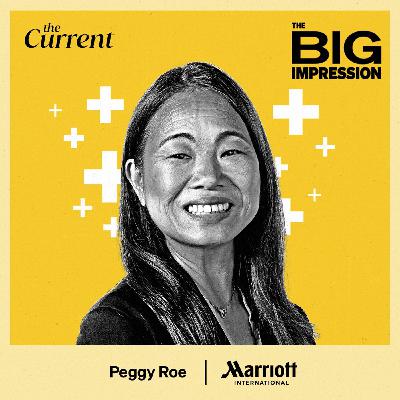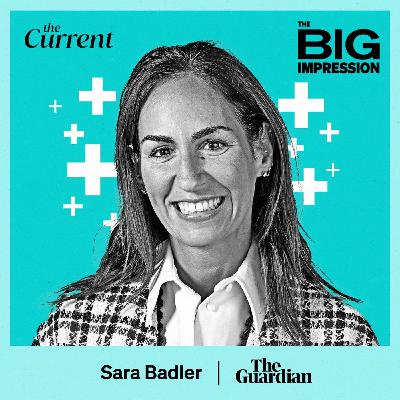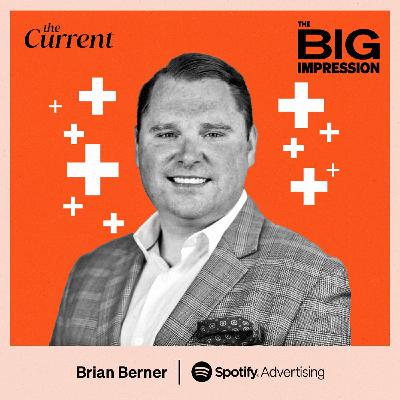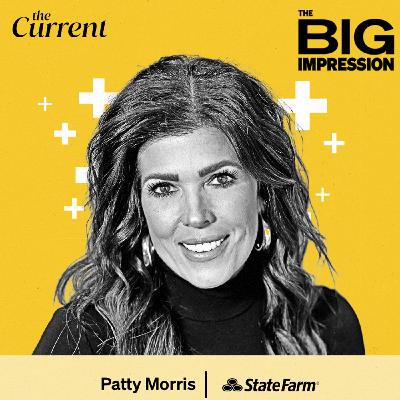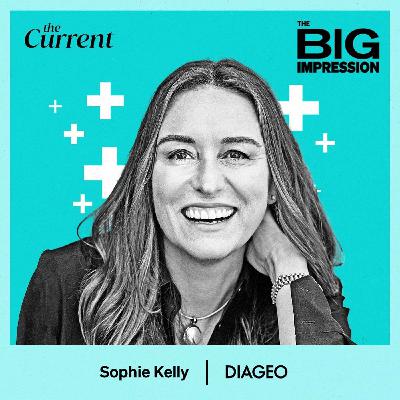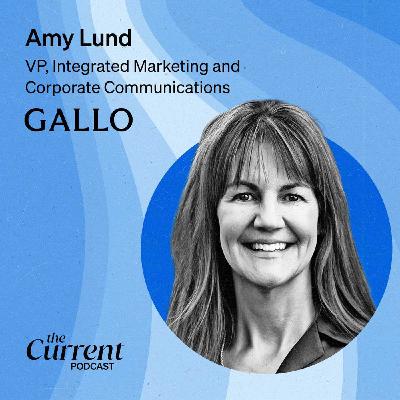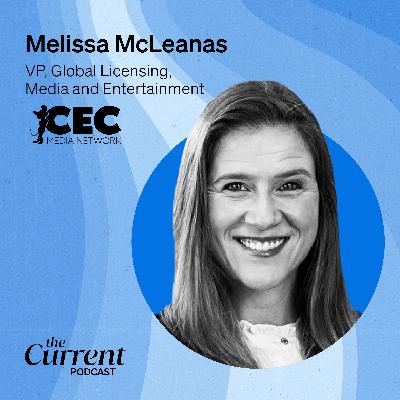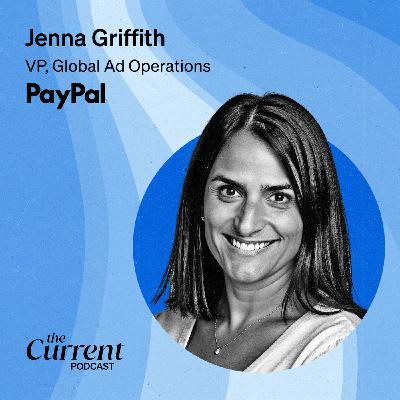CNN International Commercial’s Rob Bradley on evolving a legacy media company
Description
In this episode of The Current Podcast, we’re joined by Rob Bradley, SVP of digital revenue, strategy and operations at CNN International Commercial. He shares how CNN has evolved far beyond its broadcast roots — and how it’s now helping brands tell more impactful stories across everything from connected TV (CTV) and free ad-supported television (FAST) channels to TikTok and LinkedIn.
Episode Transcript
Please note, this transcript may contain minor inconsistencies compared to the episode audio.
Damian Fowler (00:00 ):
I'm Damian Fowler.
Ilyse Liffreing (00:01 ):
And I'm Ilyse Liffreing.
Damian Fowler (00:02 ):
And welcome to this edition of The Current Podcast.
Ilyse Liffreing (00:09 ):
This week we're thrilled to be joined by Rob Bradley, the senior vice rresident of Digital Revenue Strategy and Operations at CNN International Commercial.
Damian Fowler (00:18 ):
Now, Rob has played a key role in CNN's evolution over the last 10 years from a broadcast powerhouse into a cutting edge digital platform
Ilyse Liffreing (00:26 ):
That includes launchpad, CNN's AI powered advertising tool that's been driving smarter, more targeted campaigns for nearly a decade
Damian Fowler (00:35 ):
From global banks to tech giants like Samsung and even government launchpad has helped brands show up on CNN's platform in ways that are both innovative and effective.
Ilyse Liffreing (00:45 ):
So in this episode we'll explore that journey, how launchpad got its start, what it's become today, and how CNN is helping advertisers navigate a complex digital world using deep audience insights and data at scale.
Damian Fowler (01:00 ):
So let's get into it. So Rob, let's start by talking about Launchpad. Not everyone's familiar with it, but it's been designed to help brands market themselves to CNN's audience. So I know it's eight years old. Can you talk about the tool and how it's evolved to this point?
Rob Bradley (01:19 ):
Yeah, I mean, to take a step, media companies and news brands today need to be so much more than just a platform where someone can serve a traditional ad to reach an audience. Of course we do that and embrace that, but our audience exists in a multitude of different environments. Now, of course, o and O, which can be TV to digital assets, websites, but of course Fast and CTV now. And of course they're all across social, which means that when we're working with brands today, we need to have tools that enable us to reach audiences in all of those environments. Essentially our clients expect that from us. So we have to innovate to be in those places. And also of course, by utilizing areas our audiences exist in today such as social, it means we get a broader reach. So we try and of course a lot of brands are nervous about social, and of course we do compete somewhat, but I like to flip it on its head and think about how can we use audiences on off platform environments to our advantage?
(02:16 ):
So launchpad essentially is a good example of that. It's an in-house social media agency, essentially utilizes latest talent. I would say. I think people do come first that really understand the latest technology to help us understand our audiences both on and off platform. That did launch really just reaching audiences in places like Facebook, but now it's across all the meta platforms, YouTube, LinkedIn, TikTok, and more. And over the years that team, through utilizing technology, have automated processes. We understand sentiment of what people are consuming, how they feel against our content that we distribute both on and off platform. And then we use those insights to indeed empower the next piece of creative, let's say. And it feeds into our brand studio, which is called CNN Create, which actually touches about 70% of our campaigns now. So it's all about the way we go to market is really about selling stories and content and then utilizing the impressions and volume of scale we have around that in a smart way.
Ilyse Liffreing (03:15 ):
And today, CNN Parent Company, Warner Brothers Discovery has only massively grown since the launch of launchpad and has so many touchpoint and audience insights. You have the entirety of the Harry Potter world and DC comments to seen in news. How do you make sense then of all that data and how does it come together to benefit a launchpad campaign?
Rob Bradley (03:41 ):
So first of all, I'd say there's still a job to do and an opportunity of gathering all that together because there's so many touch points that both can power the marketing of movies that say as well as the targeting of campaigns. And those targeting of campaigns can of course be owned and operated environment. So again, we can push audience insights into social platforms to target through tools like launchpad, but ultimately by understanding who our audiences are means that we can do three things. We launched a product called WBD AIM basically, which was actually born out of CNN, used to be CNN aim, and it stands for Audience Insight Measurement. And really it means that of course we talk about targeting quite a lot, that's where the rubber meets the road. But really as a severe successful media company today, you need to go to market with insight led sales.
(04:29 ):
So use that data to inform sales to the clients, proving upfront why you've got the right audience and why they should trust you. And then of course there's the targeting the audience piece, and then there's the measurement of proving what you have done has worked. And so that aim piece all comes together as one kind of data play. And where we have had success of bringing that together so far internationally is CNN Eurosport D plus in the UK and TNT Sport in the UK now exists in one platform. And also of course that's really good for programmatic as well. We can push those audience insights, put them into the marketplace and enable brands to buy programmatically against that. So very much in the programmatic space, we're aiming at the more premium PG programmatic direct marketplace.
Damian Fowler (05:16 ):
Can I just ask you off the back of that, do you see news as part of that whole package or it's not a sort of siloed separate piece of what you are offering?
Rob Bradley (05:27 ):
Yeah, that's a really good question. I think if you are a brand that wants an engaged audience and you want to be part of a conversation that's happening today or drive a conversation, news obviously makes sense. But of course I wonder if this is where you're going. News environments are challenged at the moment in some respect. There is a prevalence of I think, unfair news avoidance in the industry, particularly with very blunt keyword block lists that are being used, which is pretty well covered in the press and that is a major challenge. However, sports has a similar issue, right? Because words like shoot and shot and attack are used all the time just as though are news. So actually sometimes if people think of news straightaway, but there's a broader issue with that. And the reason why I mention that because actually news and sports is both live, it's what's happening today, it's audiences certainly where we sell it can be sports enthusiasts across both platforms at the broader end, it can be business decision makers, it can be C-suites, it can be high net worths bringing those audiences and ultimately linking it to what WBD has an abundance of is very premium, very trusted, very brand suitable environments you could say.
(06:39 ):
And that marketplace of WBD and WBD Connect is the programmatic marketplace will keep growing.
Ilyse Liffreing (<a hr

